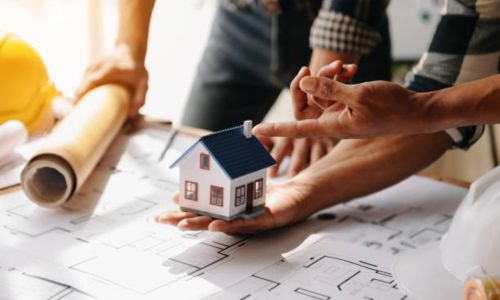Office Construction: Balancing Design and Functionality
Building a modern office space is
about much more than creating four walls and a ceiling. Today’s offices need to
be beautiful, comfortable, and highly functional — spaces that promote
productivity, support collaboration, and reflect a company’s brand and values.
Striking the perfect balance between
design and functionality can be challenging. Too much focus on
aesthetics may sacrifice comfort or efficiency, while purely utilitarian spaces
can feel dull and uninspiring.
In this blog, we'll explore how to
achieve the right harmony when planning and constructing a successful office
environment.
Understanding the Purpose of the Space
Before the design process even
begins, it’s crucial to fully understand what the office will be used for
and who will be using it.
Ask yourself:
Is
the space for creative brainstorming or quiet, focused work?
Will
employees work individually or collaborate in teams?
Is
client interaction frequent, requiring welcoming public areas?
How
much flexibility is needed for future growth or changes?
Identifying the primary functions of
the office will inform decisions about layout, design elements, and the
technologies integrated into the space.
Designing for Workflow Efficiency
A beautiful office that disrupts the
natural workflow becomes a liability rather than an asset. Functionality must
be built into the layout:
Open-plan
areas work well for teams that
collaborate frequently.
Private
offices or quiet zones are essential for
concentrated work.
Breakout
spaces encourage informal meetings and
creative thinking.
Reception
areas must be welcoming but also highly
functional for staff.
Flow of movement matters. Efficient
circulation between desks, meeting rooms, and common areas helps maximize
productivity and reduce frustration. Employees should be able to navigate the
space without obstacles or confusion.
Prioritizing Comfort and Well-being
Designing for functionality also
means making the office a comfortable place to spend long hours. Consider:
Ergonomic
furniture that supports health and reduces
fatigue
Proper
lighting, including access to natural light
whenever possible
Soundproofing to minimize noise distractions
Climate
control systems for consistent, comfortable
temperatures
Wellness
rooms or relaxation zones for stress
reduction
Comfort directly impacts employee
satisfaction, health, and retention. An office designed with well-being in mind
is not just functional — it becomes a tool for talent retention and company
growth.
Integrating Technology Seamlessly
Technology is at the heart of
today’s office functionality. In planning construction and design, it's
critical to ensure that technology is built in, not bolted on as
an afterthought.
Consider:
High-speed
internet access points throughout the office
Smart
conference rooms equipped with video conferencing
Wireless
charging stations and abundant power outlets
Digital
access control and security systems
Cloud-based
collaboration tools supported by IT infrastructure
The goal is to make technology
invisible but available, supporting work without cluttering the workspace.
Expressing Brand Identity Through Design
While functionality is vital, office
design also plays a big role in expressing a company’s brand identity.
Color palettes, furniture choices,
artwork, materials, and even layout can reflect the company's culture and
values:
A
tech startup might embrace open spaces, bright colors, and casual lounges.
A
law firm may choose rich wood finishes, private offices, and understated
elegance.
A
creative agency might favor industrial designs with murals, exposed ceilings,
and collaborative zones.
A well-designed office strengthens
brand consistency, builds internal pride, and leaves a strong impression on
visitors and clients.
Planning for Flexibility and Growth
Businesses evolve — and so should
their office spaces. Modern office construction should include flexibility
to accommodate growth, restructuring, and new work styles.
Some strategies include:
Movable
walls or modular furniture
Desks
that can be easily reconfigured
Multi-purpose
rooms that serve as meeting areas, training centers, or event spaces
Extra
cabling and power access for future tech expansions
Building in flexibility saves money
and disruption in the long term by avoiding major renovations as the company’s
needs change.
Considering Sustainability
Sustainability is no longer just a
trend — it’s a necessity. Clients, employees, and even regulators expect
offices to be environmentally responsible.
Sustainable office construction
might include:
Energy-efficient
lighting and HVAC systems
Sustainable
building materials like bamboo flooring or recycled steel
Green
certifications such as LEED or WELL
Water-saving
plumbing systems
Rooftop
solar panels or green roofs
An eco-conscious office reduces
operational costs, improves employee well-being, and enhances brand reputation.
Budgeting for Both Form and Function
Budget is always a factor, but
cutting corners on design or functionality can be a mistake. A successful
project carefully balances both needs within a realistic budget.
Tips for managing the budget
include:
Prioritizing
must-haves (like ergonomic desks) over nice-to-haves (like custom sculptures)
Phasing
construction to spread costs over time
Investing
in high-quality essentials while choosing affordable options for aesthetic
elements
A smart investment in both form and
function pays off in employee productivity, reduced maintenance costs, and a
better return on investment over time.
Collaborating With the Right Professionals
Finally, choosing the right team is
essential. Your architect, interior designer, contractor, and project manager
must all understand the importance of balancing design with functionality.
Effective collaboration between
creative designers and practical builders ensures that the finished space is
both inspiring and efficient. Regular meetings, clear communication, and shared
goals can keep the entire project aligned from start to finish.
Final Thoughts
In today’s competitive business
environment, your office space is more than just a place to work — it’s a
strategic asset.
By thoughtfully balancing design and
functionality, you can create an environment that supports your team, impresses
clients, and adapts to the future.
Whether you're starting from scratch
or renovating an existing space, remember: A truly successful office
construction project is where style and substance come together seamlessly.




Comments
Post a Comment